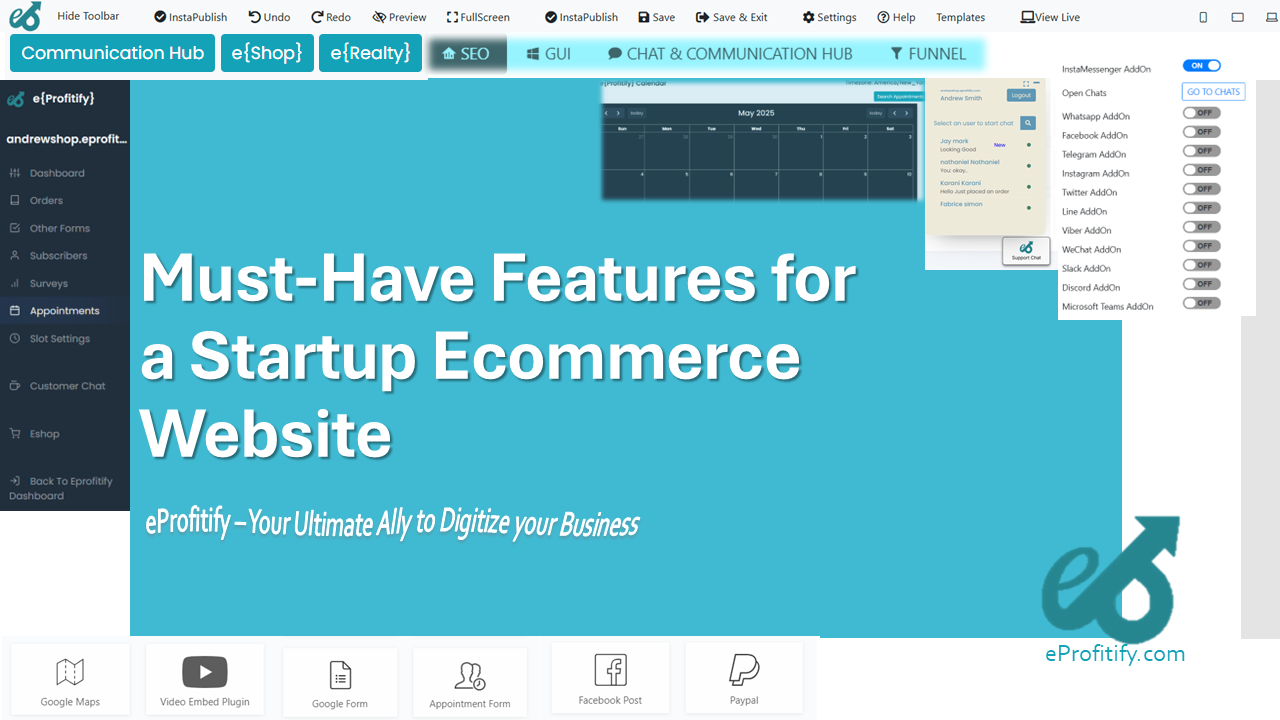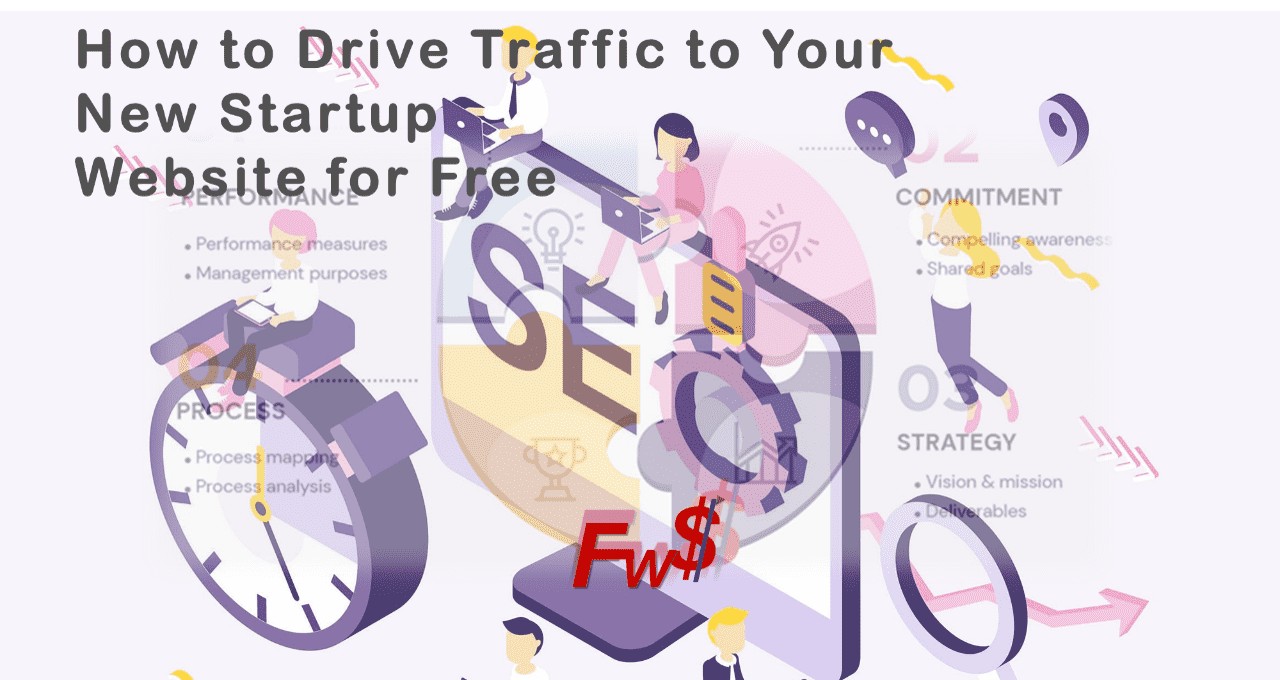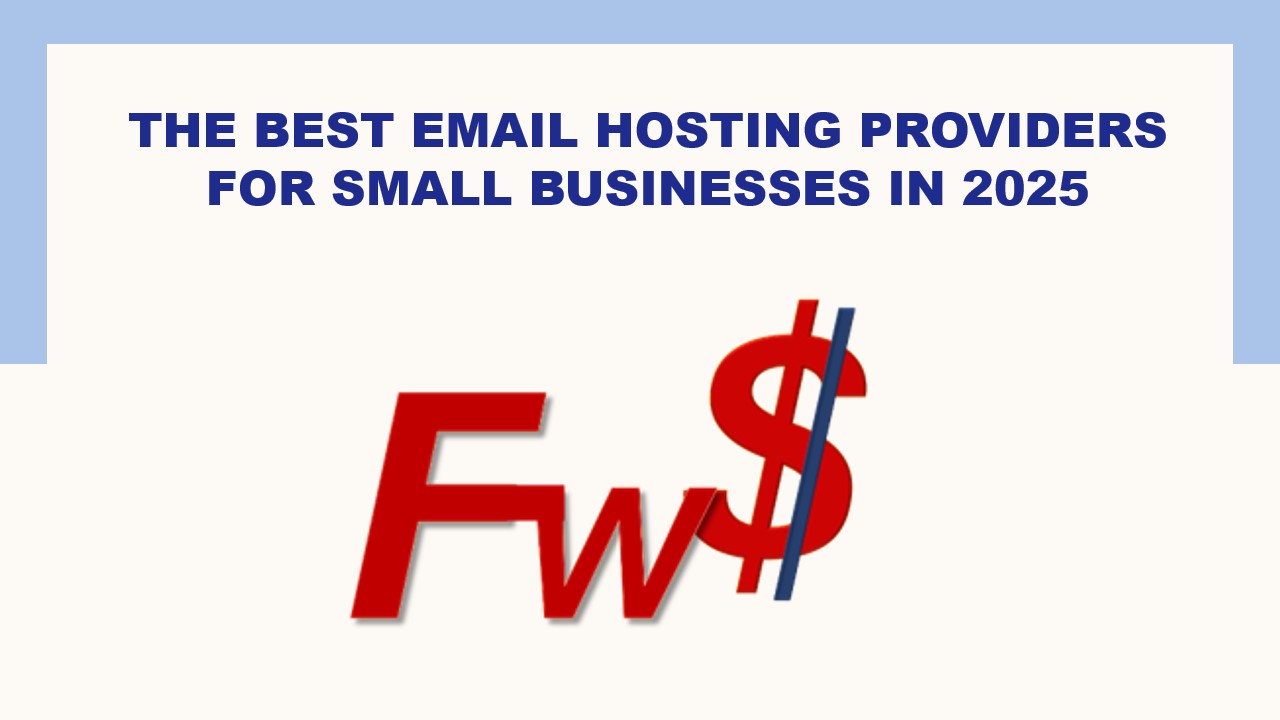Must-Have Features for a Startup Ecommerce Website

Must-Have Features for a Startup eCommerce Website: A Data-Driven Guide
The global eCommerce market is projected to reach $6.3 trillion by 2024, with startups playing a pivotal role in driving innovation and competition. However, 90% of startups fail within the first year, often due to poor user experience, technical inefficiencies, or lack of scalability. For new eCommerce businesses, the right website features are not just optional—they’re critical for survival. In this guide, we explore the must-have features for a startup eCommerce website, backed by statistics, and showcase how platforms like eProfitify streamline success through integrated tools like instant messaging, CRM, and automated workflows.
1. User-Friendly Design & Intuitive Navigation
A cluttered or confusing interface drives customers away. Studies show that 88% of online shoppers won’t return to a site after a bad user experience (UX). Startups must prioritize:
- Clean layouts with minimal distractions.
- Search bars (used by 30% of visitors to navigate).
- Filtering options for price, size, and ratings.
- One-click navigation to reduce friction.
How eProfitify Helps: Its drag-and-drop builder allows startups to create visually appealing, intuitive storefronts without coding.
2. Mobile-Optimized Experience
Mobile commerce accounts for 60% of global eCommerce sales (Statista, 2023). A non-responsive design leads to 50% lower conversion rates. Key mobile features include:
- Fast load times (53% of users abandon sites taking over 3 seconds to load).
- Thumb-friendly buttons and menus.
- Accelerated Mobile Pages (AMP) for quicker browsing.
eProfitify’s Advantage: Its templates are auto-optimized for mobile, ensuring seamless shopping across devices.
3. Secure Payment Gateways & SSL Certification
Security breaches cost businesses $4.45 million on average per incident (IBM, 2023). For eCommerce startups, trust is non-negotiable:
- Offer multiple payment options (Credit/Debit, PayPal, Apple Pay).
- Implement SSL encryption (sites without it lose 84% of potential customers).
- Comply with PCI DSS standards for data protection.
eProfitify Integration: Built-in SSL certification and partnerships with Stripe, PayPal, and other gateways streamline secure transactions.
4. Robust Product Management Tools
Effective inventory and product displays directly impact sales:
- High-quality images/videos: Products with videos convert 85% faster.
- Dynamic filters (e.g., “Best Sellers,” “New Arrivals”).
- Stock alerts to notify customers of restocks.
eProfitify Feature: Centralized dashboards let startups manage thousands of SKUs, automate restock alerts, and upload HD media effortlessly.
5. SEO & Marketing Tools
75% of users never scroll past the first page of search results. Startups need:
- Keyword-optimized product descriptions.
- Blog integration (content marketing generates 3x more leads).
- Meta tags and alt text for images.
eProfitify’s Edge: Built-in SEO tools analyze keyword performance and automate metadata optimization.
6. Live Chat & Instant Messaging
Customers expect instant support—73% say live chat is their preferred support channel. Features like:
- 24/7 chatbots for FAQs.
- Human-agent handoffs for complex issues.
- Post-purchase follow-ups via SMS or WhatsApp.
eProfitify Solution: Its instant messaging widget supports AI chatbots and real-time agent interactions, boosting satisfaction by 20%.
7. CRM & Customer Retention Tools
Acquiring a new customer costs 5x more than retaining an existing one. Must-haves include:
- Loyalty programs (56% of shoppers spend more after joining).
- Personalized emails (segmented campaigns yield 760% more revenue).
- Post-purchase surveys to gather feedback.
eProfitify’s CRM: Track customer behavior, segment audiences, and trigger automated retention campaigns from a single platform.
8. Analytics & Reporting Dashboard
Data-driven decisions are key. Startups should track:
- Conversion rates (global average is 2.5%).
- Cart abandonment rates (69.99% as of 2024).
- Traffic sources (organic vs. paid).
eProfitify Analytics: Real-time dashboards highlight trends, abandonment hotspots, and campaign ROI, enabling quick strategy pivots.
9. Scalability & Integration Capabilities
Startups grow fast—your platform must keep up. Prioritize:
- Cloud hosting for traffic spikes.
- API access to connect third-party tools (e.g., email marketing, ERPs).
- Multi-language/currency support for global expansion.
eProfitify’s Scalability: Its modular architecture scales with your business, supporting unlimited products, integrations, and international sales.
10. Social Proof & Reviews
92% of shoppers read reviews before buying. Embed:
- Star ratings on product pages.
- User-generated content (UGC) galleries.
- Social media shoutouts.
eProfitify Add-On: Automatically import reviews from Google, Facebook, and Instagram to build credibility.
Why eProfitify Stands Out for Startups
While tools like Shopify and WooCommerce offer piecemeal solutions, eProfitify combines every critical feature into one cost-effective platform. Startups benefit from:
- All-in-one dashboard for inventory, CRM, and analytics.
- Appointment management for service-based eCommerce (e.g., consultations, rentals).
- AI-driven insights to forecast demand and optimize pricing.
With 40% faster setup times compared to competitors, eProfitify empowers startups to focus on growth, not technical hurdles.
Conclusion
In 2024, eCommerce startups need more than a basic online store—they require a frictionless, secure, and scalable ecosystem. From mobile-first design to AI-powered CRM, these features are essential for converting visitors into loyal customers. Platforms like eProfitify simplify this journey by bundling must-have tools under one roof, making it a strategic partner for startups aiming to outpace competitors. By prioritizing these elements, new businesses can reduce overhead, enhance customer lifetime value, and carve a niche in the booming digital marketplace.
(







